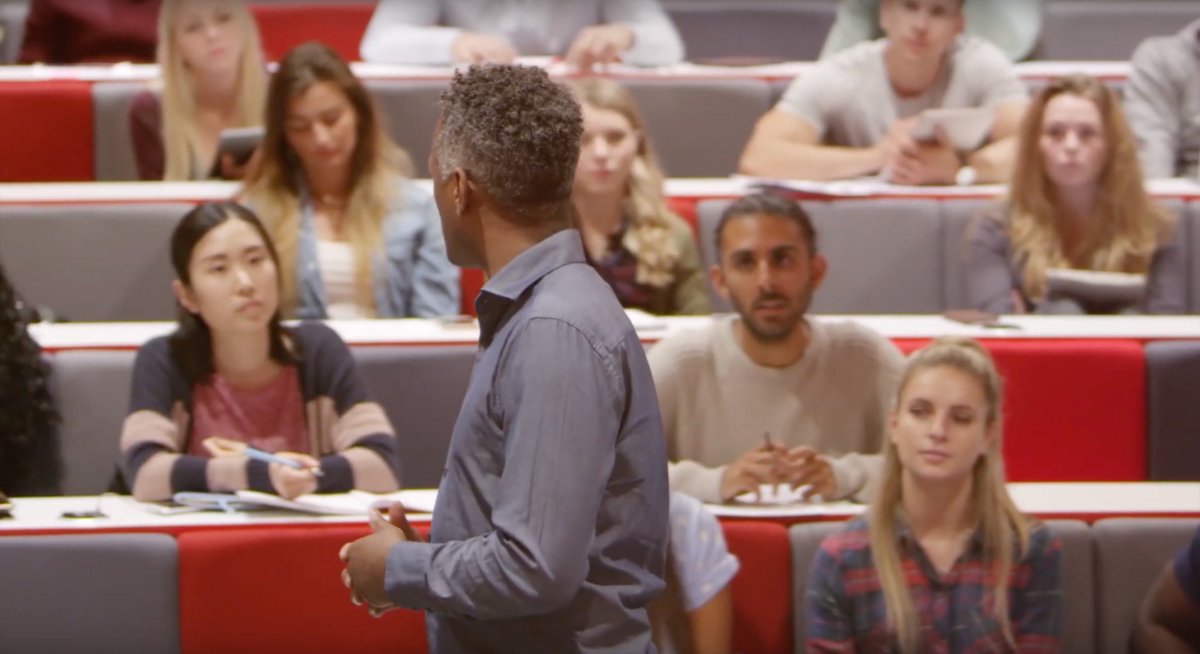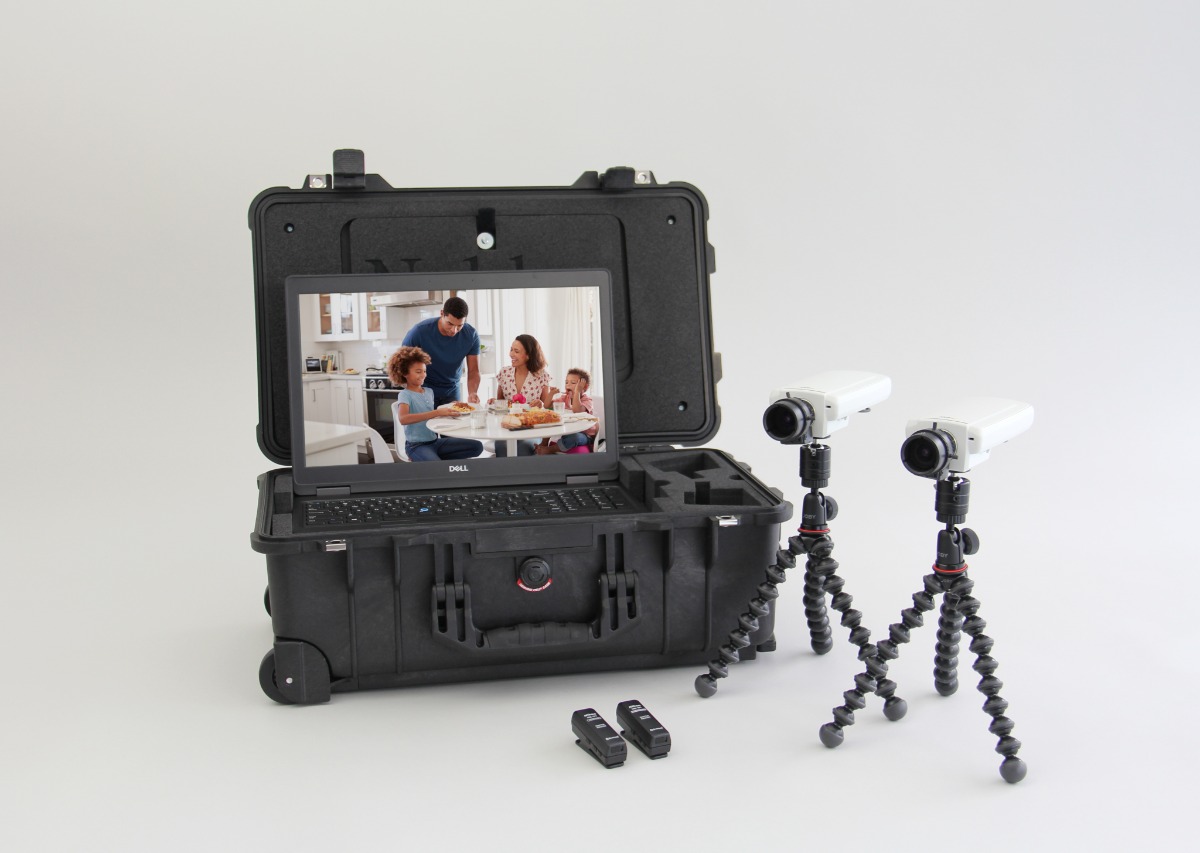教育研究(Educational research)
教育することは、社会的相互作用の本質となります。この研究はコミュニケーションスキルとグループダイナミクスに大きく依存しています。どちらもThe Observer XTで観察・調査することが可能となり、典型的にはビデオベースであり、実生活の状況で実施されます。
研究テーマの例
- 教師と学生の交流
- 共有ブックの読書
- 発達障害児の特殊教育プログラムの有効性
- 生徒の行動問題への関与
Viso
Visoは観察施設に完璧なセットアップを作り出します。ライブは録画したものをそのまま表示することができます。 デブリーフィングに遅れがないので、教育者の注意は学習者の行動に完全に焦点を当てることができます。どのような種類の研究分野であっても、Visoは入手可能な最も使いやすいツールです。

プレゼンテーションビザ – 理想的なマルチルーム、マルチビデオレコーディングスイート。
ポータブル・ラボ
ポータブル・ラボでは、さまざまな視点からのビデオ録画が可能です。The Observer XTは、ビデオのコーディングとデータの分析に使用されます。 継続的かつ瞬間的なサンプリングを組み合わせます。これは特に教室の状況で非常に有用となります。先生の行動をたどって、すべての子供たちを瞬時にサンプリングすると、2分に1回は何をしているのかを見ることが可能です。

出版物
- Schaik, M. van; Oers, B. van; Terwel, J. (2011). Towards a knowledge-rich learning environment in preparatory secondary education. British Educational Research Journal, 37(1), 61-81.
- Edyburn, D.; Basham, J. (2008). Research and Practice. Collecting and Coding Observational Data. Journal of Special Education Technology, 23 (2), 56-60.
Noldus製品を引用するさまざまな科学論文が毎週有名な雑誌に掲載されています。 以下のリストは、教育研究における科学刊行物のほんの一部です。
- Baker, J.A.; Clark, T.P.; Maier, K.S.; Viger, S. (2008). The differential influence of instructional context on the academic engagement of students with behavior problems. Teaching and teacher education, 24, 1876-1883.
- Brown, K.; Kennedy, H. (2011). Learning through conversation: Exploring and extending teacher and children’s involvement in classroom talk. School Psychology International, DOI: 10.1177/0143034311406813.
- Drape, T.A.; Westfall-Rudd, D.; Doak, S.; Guthrie, J.; Mykerezi, P. (2013). Technology intergration in an agriculture associate’s degree program: a case study guided by rogers diffusion of innovation. NACTA Journal, 24-35.
- Kandalla, M.; Bhat, P. (2010). Early Social Skills as a Function of Gender: An Observational Study of Children Between 3-8 Years in Andhra Pradesh, India. Proceedings of Measuring Behavior 2010, 7th International Conference on Methods and Techniques in Behavioral Research (Eind-hoven, The Netherlands, 24-27 August 2010), 235-238.
- Klein, P.S.; Adi-Japha, E.; Hakak-Benizri, S. (2010). Mathematical thinking of kindergarten boys and girls: similar achievement, different contributing processes. Educational Studies in Mathematics, 73, 233-246.
- Lefstein, A.; Snell, J. (2013). Beyond a unitary conception of pedagogic pace: quantitative measurement and ethnographic experience. British Educational Research Journal, 39 (1), 73-106.
- Leng, B.A. de; Dolmans, D.H.J.M.; Donkers, H.L.M.; Muijtens, A.M.M.; Vleuten, C.P.M. van der (2010). Instruments to explore blended learning: Modifying a method to analyse online communication for the analysis of face-to-face communication. Computers & Education, 55, 644-651.
- Li, H.; Rao, N.; Kam Tse, S. (2011). Bridging the gap: a longitudinal study of the relationship between pedagogical continuity and early Chinese literacy acquisition. Early years, 31 (1), 57-70.
- Snell, J. (2011). Interrogating video-data: Systematic quantitative analysis versus micro-ethnographic analysis. International Journal of Social Research Methodology, 14(3), 253?258.
- McAuliffe, M.D.; Hubbard, J.A.; Romano, L.J. (2009). The role of teacher cognition and behavior in children’s peer relations. Journal of abnormal child psychology, 37(5), 665-677.
- Smith, F.; Hardman, F.; Higgins, S. (2007). Gender inequality in the primary classroom: will interactive whiteboards help? Gender and education, 19(4), 455-469.
Blog posts on classroom observation


